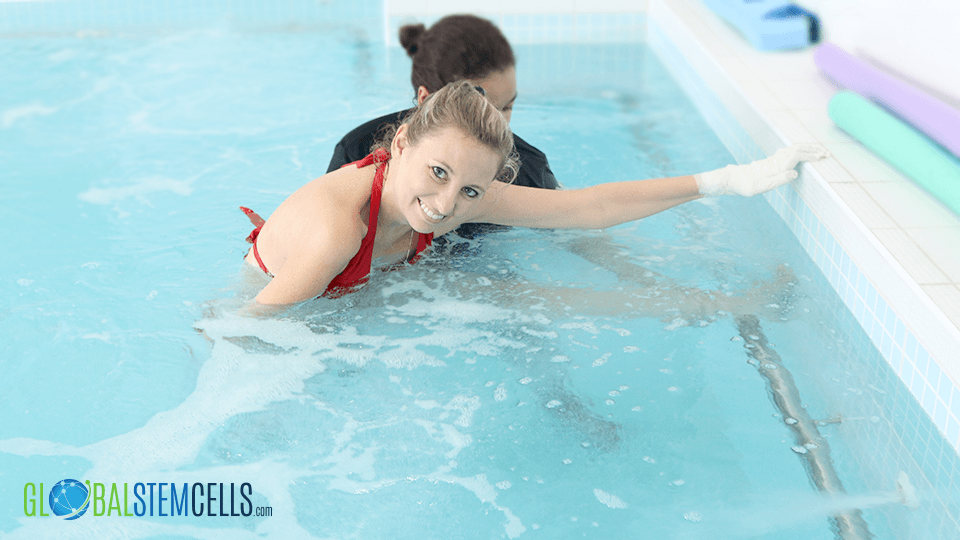Aquatic Therapy refers to the rehabilitation and therapeutic treatments and exercises carried out under water. Typically, aquatic therapy requires the warm, relaxing and supportive nature of a heated pool.
Aquatic Therapy techniques range from aquatic bodyworks, physical therapy, aquatic exercise and other movement-based therapies. These techniques are designed to improve stability, body movement, and muscular strength and function.
How Does Aquatic Therapy Work?
Aquatic Therapy is carried out by well trained Physical Therapists. The therapists complete a physical needs assessment and functional issues involved. The therapist then develops an appropriate program, keeping in mind the patient’s condition.
The facilities usually provide a heated pool that is designed to assist any patient who is not able to get into the pool alone. Our highly trained therapist will instruct the patient on the correct exercise and breathing techniques. The therapist also provides physical support to the patient until he or she is able to do the exercises without support.
Benefits of Aquatic Therapy
The unique properties of water provide a conducive environment for rehabilitation intervention for patients with musculoskeletal degenerative and neurological conditions.
Buoyancy defies gravity and gives the individual the feeling of an upward thrust. Exercises could be designed to resist buoyancy, support buoyancy or assist it. The water supports the patient’s body enhancing flexibility and range of motion.
Hydrostatic pressure is the pressure exerted on an immersed body by the liquid surrounding it. The pressure is exerted evenly over the entire body. It compresses the entire body relieving muscle aches and pains. All the patient has to do is get into the pool and “let the water do its work.”
Viscosity in water provides resistance in aquatic exercises. The viscosity of water refers to the way molecules of water resist separation when you try to move through it. This means that more muscles are employed for movement in the water. Water resistance in the pool masks the involuntary spastic movements and tremors experienced by patients with neurological disorders.
An aquatic environment provides the ideal setting for cognitive rehabilitation for individuals with neurological or degenerative conditions. The water allows the body to move and work at its on pace; which is just perfect for the patients.
Aquatic therapy offers rehabilitative support for patients undergoing stem cell treatments.
Aquatic Therapy Research
Water has been used for therapeutic purposes for centuries, although professional aquatic therapy is still relatively new. As early as the 11th century, Swiss monks would lower sick or disabled patients into thermal waters. The immersion would improve flexibility in the patients and reduce their pain.
Researchers at the University of Toronto conducted a study on the “effects of aquatic therapy on mobility of individuals with neurological diseases”. They found acceptable evidence linking aquatic therapy to improved speed in movement and stability in patients with particular neurological conditions.
Another study conducted by Asklepios Neurological Hospital Falkenstein, Germany on the “effects of an aquatic therapy approach on functional mobility in sub-acute stroke patients”. The researchers found aquatic therapy to be tolerable to stroke patients and also positively affected the patients’ mobility.




 English
English